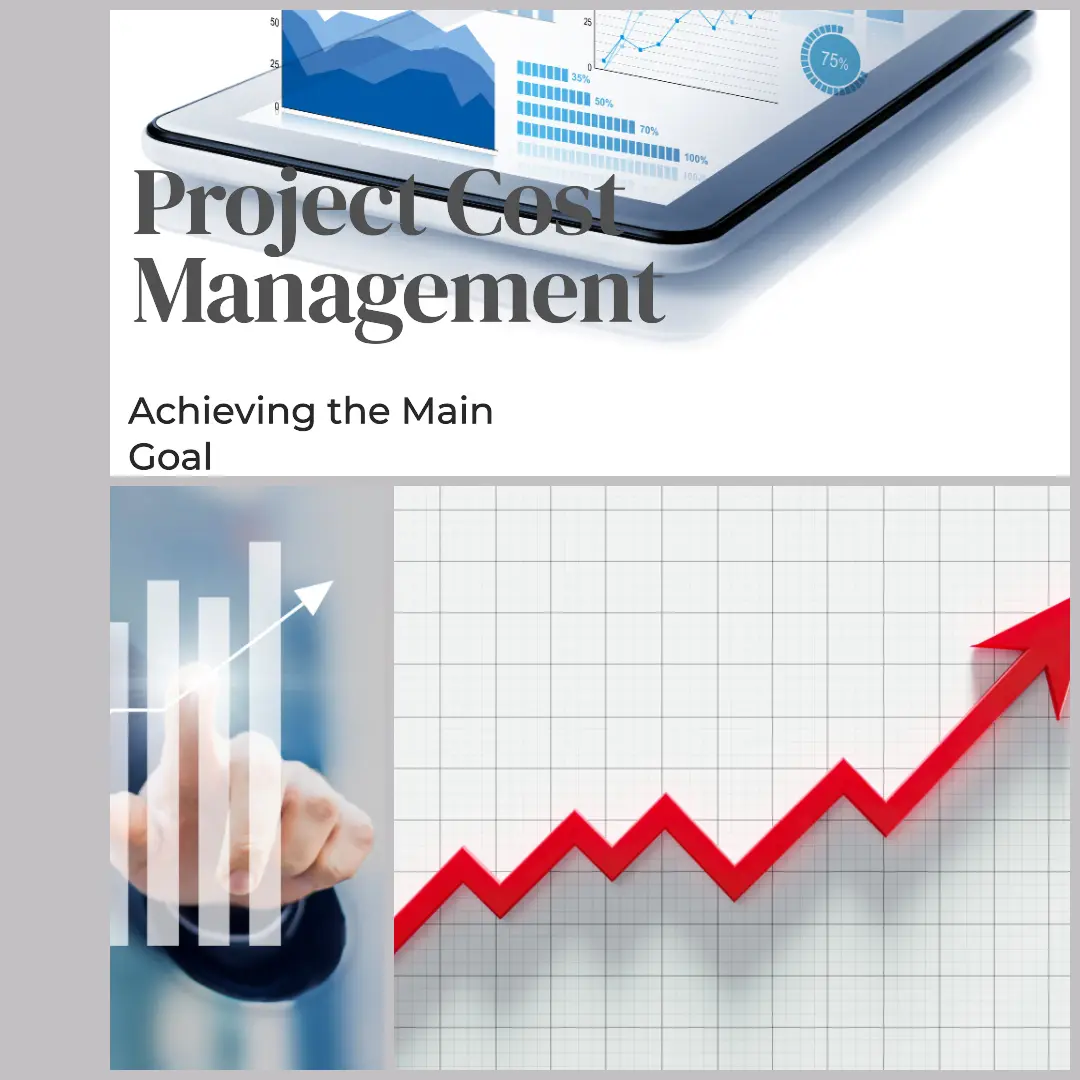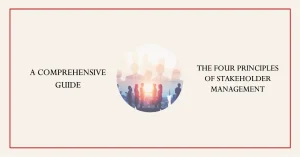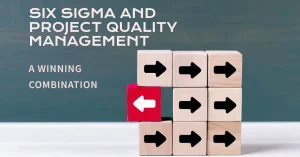I. Introduction
As a project manager, I know firsthand that managing costs is one of the most crucial aspects of any successful project. Over the years, I’ve seen the impact that effective project cost management can have on the overall success of a project, and conversely, how poor cost management can lead to project failure. In this blog post, I’m going to share my insights on the main goal of project cost management and provide you with some practical tips on how to achieve it. But first, let’s take a moment to understand the challenges that come with managing project costs.
In today’s dynamic and fast-paced business environment, it’s not uncommon for project managers like you and me to face various obstacles when it comes to cost management. From ever-changing project requirements to unexpected issues that pop up during execution, there’s no shortage of hurdles that can threaten the success of our projects. However, by understanding the main goal of project cost management, we can better equip ourselves to overcome these challenges and ensure our projects stay on track.
At its core, the main goal of project cost management is to complete a project within the approved budget. Sounds simple, right? Well, as you might have guessed, there’s more to it than meets the eye. In this blog post, we’ll delve deeper into the main goal of project cost management and explore strategies for accurate cost estimation, effective cost monitoring, and control. So, buckle up and get ready to discover how you can become a project cost management superstar!
II. The Main Goal of Project Cost Management
Having worked on various projects over the years, I’ve come to realize that understanding project cost management is essential for ensuring the success of any project. So, let’s start by defining what project cost management actually is.
A. Definition of project cost management
Project cost management is the process of planning, estimating, budgeting, monitoring, and controlling costs to ensure a project is completed within the approved budget. It’s like being the financial guardian of your project, making sure you get the best value for the money spent while avoiding overspending.
B. Understanding the main goal: completing the project within the approved budget
The main goal of project cost management may seem quite straightforward – completing the project within the approved budget. However, achieving this goal can often be challenging due to various factors, such as changing project requirements, limited resources, or unforeseen risks. That’s why it’s essential to have a clear understanding of your project’s scope, a well-defined budget, and the right strategies in place to monitor and control costs effectively.
C. The benefits of achieving the main goal
Successfully managing project costs and staying within budget can lead to numerous benefits. Not only does it contribute to a project’s overall success, but it also helps build trust and credibility with your stakeholders. By consistently delivering projects within budget, you’ll be seen as a reliable project manager, which can lead to more opportunities and career growth. Plus, let’s not forget the immense satisfaction that comes from knowing you’ve managed your project’s financial resources effectively and delivered the desired results without breaking the bank!
Now that we’ve grasped the main goal of project cost management, let’s dive into some practical tips and strategies to help you achieve it. In the following sections, we’ll discuss accurate cost estimation, effective cost monitoring, and cost control techniques that I’ve found to be invaluable in my own project management journey. So, let’s roll up our sleeves and get to work!
III. Accurate Cost Estimation
One of the first steps to achieving the main goal of project cost management is ensuring that your cost estimates are as accurate as possible. As a project manager, I’ve learned that a well-informed cost estimate is the foundation for effective budgeting, monitoring, and control. So let’s delve into how we can create comprehensive and accurate cost estimates.
A. Importance of accurate cost estimation
Accurate cost estimation is vital for setting realistic expectations with stakeholders and making informed decisions throughout the project. It enables us to allocate resources efficiently, plan for contingencies, and mitigate risks. In my experience, having a precise cost estimate from the get-go can save a lot of headaches and prevent budget overruns down the line.
B. Steps for creating a comprehensive cost estimate
- Identify project activities and resources: Start by breaking down your project into smaller tasks and activities. Then, determine the resources needed for each activity, such as labor, materials, equipment, and other expenses.
- Estimate resource costs: For each resource, estimate the associated costs. This may include hourly rates for labor, material costs, equipment rental fees, and so on. Don’t forget to account for potential fluctuations in costs, such as currency exchange rates or market conditions.
- Determine contingencies and risk allowances: No project is without risks, and it’s essential to plan for uncertainties. Include a contingency reserve in your cost estimate to cover unforeseen events or cost overruns. Also, consider any risk allowances that may be needed to address potential risks specific to your project.
- Account for indirect costs: Indirect costs are those that cannot be directly attributed to a specific project activity but are still incurred during the project. Examples include overhead expenses, administrative costs, and insurance premiums. Be sure to factor these into your overall cost estimate.
C. Techniques for improving cost estimation accuracy
- Expert judgment: Consult with experienced team members or industry experts to validate your cost estimates. Their knowledge and insights can help you refine your estimates and avoid potential pitfalls.
- Analogous estimation: Use historical data from similar projects as a basis for your cost estimates. This can help you identify trends and patterns that may be applicable to your current project.
- Parametric estimation: This technique involves using statistical models or algorithms to estimate costs based on historical data and project parameters. Parametric estimation can be particularly useful for large or complex projects with a significant amount of data.
- Bottom-up estimation: Break down the project into smaller tasks, estimate the costs for each task, and then aggregate the costs to arrive at the total project cost. This method can be time-consuming but often leads to more accurate cost estimates.
By focusing on accurate cost estimation, you’ll be setting yourself up for success in achieving the main goal of project cost management. In the next sections, we’ll explore effective cost monitoring and control strategies to help you stay on track and within budget throughout your project’s life cycle.
IV. Effective Cost Monitoring
As a project manager, I can tell you that simply creating an accurate cost estimate is not enough. To achieve the main goal of project cost management, we must also diligently monitor costs throughout the project’s life cycle. This helps us stay informed about the project’s financial health and make timely adjustments when necessary. Let’s look at how we can monitor costs effectively.
A. The need for continuous cost monitoring
Projects are dynamic by nature, and various factors can impact costs as the project progresses. Continuous cost monitoring enables us to identify and address cost discrepancies before they escalate into significant issues. In my experience, proactive cost monitoring has often been the key to keeping projects within budget and maintaining stakeholder confidence.
B. Key performance indicators (KPIs) for cost monitoring
To effectively monitor project costs, we need to track specific KPIs. These metrics provide valuable insights into the project’s financial performance and help us identify areas that require attention. Here are some essential KPIs that I’ve found to be useful in my project management journey:
- Cost variance (CV): This metric compares the actual cost of work performed with the budgeted cost for the same work. A positive CV indicates that the project is under budget, while a negative CV signals that it is over budget.
- Schedule variance (SV): Schedule variance measures the difference between the actual progress of the project and its planned progress. A positive SV indicates that the project is ahead of schedule, while a negative SV suggests that it’s behind schedule.
- Cost performance index (CPI): The CPI is the ratio of the earned value (the value of work completed) to the actual cost. A CPI greater than 1 indicates that the project is performing well financially, while a CPI less than 1 implies that it is underperforming.
- Schedule performance index (SPI): The SPI is the ratio of the earned value to the planned value (the value of work that should have been completed by a certain date). An SPI greater than 1 suggests that the project is ahead of schedule, while an SPI less than 1 implies that it’s behind schedule.
C. Techniques for cost monitoring
- Earned value management (EVM): EVM is a widely used project management technique that integrates scope, schedule, and cost data to measure project performance. By using EVM, we can track project progress and forecast future performance, helping us stay on top of project costs and make informed decisions.
- Regular project status reporting: Consistent project status reporting allows us to keep stakeholders informed about the project’s financial performance. This practice not only promotes transparency but also encourages accountability among team members.
- Budget reviews and revisions: Periodically review your project budget to ensure it remains accurate and up-to-date. If necessary, make adjustments to accommodate changes in project scope, resource availability, or other factors that may impact costs.
By implementing effective cost monitoring practices, you’ll be well-equipped to manage your project’s financial performance and work towards achieving the main goal of project cost management. In the next section, we’ll discuss cost control strategies to help you maintain control over your project’s costs and stay within budget.
V. Cost Control Strategies
As we’ve seen so far, accurate cost estimation and effective cost monitoring are essential elements of project cost management. However, to truly achieve the main goal of staying within budget, we also need to have robust cost control measures in place. In this section, I’ll share some cost control strategies that I’ve found to be beneficial in managing my own projects.
A. Implementing cost control measures
Cost control involves managing and adjusting project costs to ensure they remain within the approved budget. This may require making tough decisions or implementing cost-saving measures, but in my experience, it’s a vital part of being a successful project manager. By actively controlling project costs, we can minimize the impact of cost overruns, maintain stakeholder confidence, and ensure the project’s financial success.
B. Cost reduction strategies
There are various cost reduction strategies that you can implement to keep your project within budget. Here are some that have proven effective for me:
- Value engineering: This process involves analyzing the project’s design, materials, and processes to identify opportunities for cost savings without compromising quality or performance. By optimizing the project’s value, we can reduce costs and improve efficiency.
- Negotiating with suppliers and subcontractors: As a project manager, don’t be afraid to negotiate with suppliers and subcontractors to secure better prices or more favorable terms. This can help you minimize costs and maximize the value of your resources.
- Process optimization: Review your project processes to identify any inefficiencies or bottlenecks. Streamlining processes and eliminating waste can help reduce costs and improve overall project performance.
C. Maintaining cost control throughout the project life cycle
Cost control is not a one-time effort; it should be maintained throughout the project life cycle. Continuously review and adjust your cost control measures as needed to adapt to changing project conditions and to ensure that your project remains on track financially. By staying vigilant and proactive in controlling costs, you’ll be better equipped to achieve the main goal of project cost management.
In conclusion, remember that managing project costs is an ongoing process that requires a combination of accurate cost estimation, diligent cost monitoring, and proactive cost control. By implementing the tips and strategies discussed in this blog post, you’ll be well on your way to achieving the main goal of project cost management and ensuring the financial success of your projects. So, go forth and conquer those budgets, fellow project managers!
VI. Conclusion
As we wrap up this journey through the world of project cost management, I hope you’ve found the insights, tips, and strategies shared in this blog post valuable. As a project manager myself, I can attest to the importance of achieving the main goal of project cost management – completing a project within the approved budget. By doing so, we not only contribute to the overall success of our projects but also build trust and credibility with our stakeholders.
To recap, we’ve discussed the significance of accurate cost estimation, effective cost monitoring, and cost control strategies in achieving the main goal of project cost management. Remember that managing project costs is an ongoing process, and it’s essential to stay proactive and adaptive throughout your project’s life cycle.
In my experience, continuous improvement is the key to becoming a project cost management superstar. Don’t be afraid to learn from your experiences, both successes, and failures, and always be open to refining your cost management practices. By doing so, you’ll be better equipped to tackle future projects and continue delivering exceptional results within budget.
So, fellow project managers, I encourage you to put these strategies and tips into practice as you embark on your next project. Here’s to staying within budget and making every dollar count!
To find out how Artificial Intelligence is changing the Project Management landscape, you have enjoy reading this article https://www.shaunstoltz.com/did-artificial-intelligence-just-change-everything-about-project-management/
Find out more about Shaun Stoltz https://www.shaunstoltz.com/about/
This post was written by an AI and reviewed/edited by a human.



